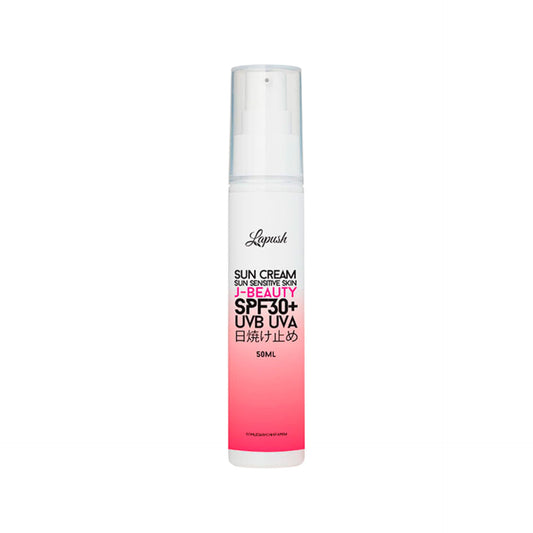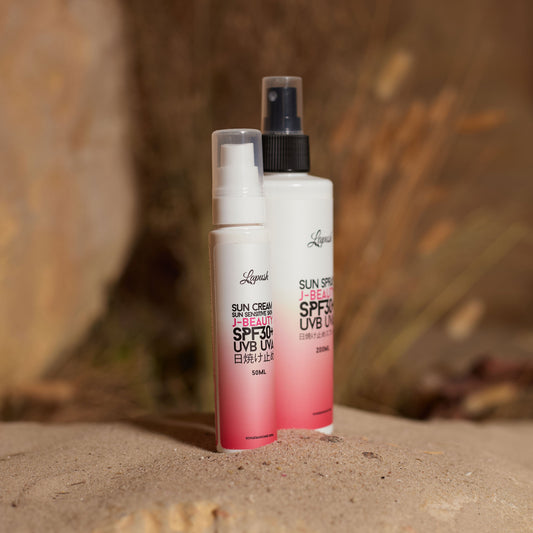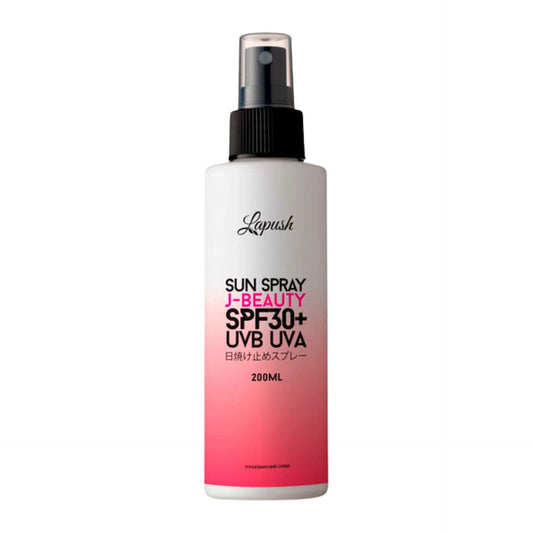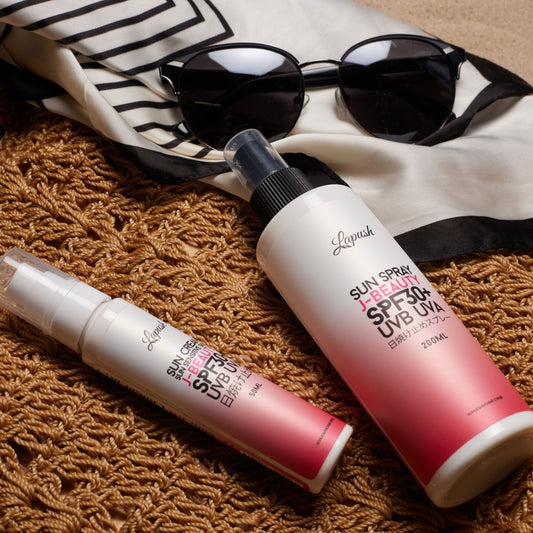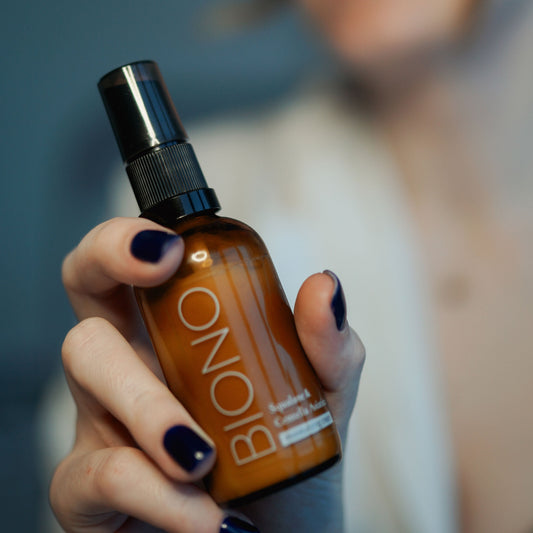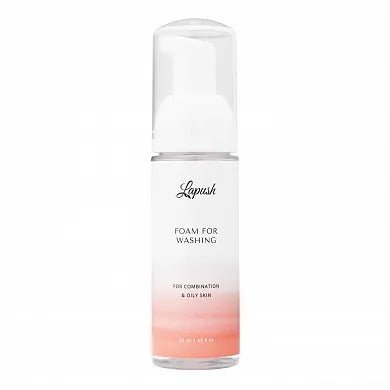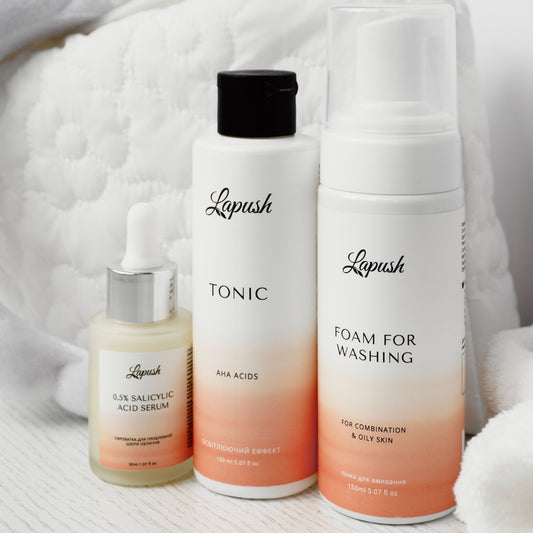
How to properly wash off SPF from your face: the main rules for cleansing your skin in summer
In the summer, we actively use sunscreen, and rightly so — SPF protection is the basis of skin care. But few people think about another important question: how to properly wash SPF off the face? Is simple foam or water enough? Do we need to carry out additional cleansing steps?
In fact, sunscreens, especially those that are water-resistant or have mineral filters, need to be removed thoroughly. If you don’t, the SPF residue can build up in your pores, causing breakouts, inflammation, or dull skin. So even the best sunscreen can do a disservice.
Why it's important to use SPF every day
Sunscreen is not just a product for the beach or vacation. It is a daily care base that protects the skin from the harmful effects of ultraviolet radiation. It is UV radiation that is the main cause of photoaging, the appearance of age spots, loss of elasticity and even oncological changes in the skin. And what is important - UVA rays are present even on a cloudy day and penetrate through windows.
Using SPF daily helps keep your skin looking youthful, prevents dehydration, increased sensitivity, and the appearance of unwanted skin tone. This is especially true in the summer, but it is also important in the off-season, when the level of solar activity changes, but the effects remain.
However, SPF alone is only half the battle. For it to really work, it needs to be washed off on time and properly, preventing the build-up of filters, sebum, and impurities. In this blog, we’ll look at exactly how to do this—easily, without harming your skin, and while maintaining balance.
How to apply sunscreen to your face
Applying SPF correctly is just as important as choosing and removing it. Most people apply too little sunscreen, which results in a much lower level of protection than what is stated on the label.
The optimal amount for the face is about a quarter of a teaspoon or 2-3 mg per cm² of skin. This may seem like a lot, but this is exactly the amount that provides the stated SPF. It is better to apply in two stages: first half of the portion, let it absorb a little, and then the rest. This way the product will lie more evenly and will not slide off.
Start in the center of the face and work your way outwards, carefully working through all areas – the wings of the nose, the area around the eyes, the ears, the neck. Often forgotten are the eyelids, the hairline and the area under the chin – this is where the skin is most sensitive to UV rays.
SPF should be applied 15-20 minutes before going out in the sun - this is the time needed for the filters to activate and create a reliable protective barrier. In the summer, it is important to renew protection every 2-3 hours, especially if you sweat, swim, or touch your face with your hands.
If you use makeup, apply SPF under your foundation, but over your serums and moisturizers. Some foundations also have SPF, but don't rely on them alone—they tend to be applied in a thinner layer and don't provide full protection.

Why SPF products need thorough cleansing
Sunscreens are designed to adhere to the skin and stay on despite moisture, sweat, or contact with clothing. This means that regular washing cannot completely remove them from the surface of the face - residues can remain in the pores and on the stratum corneum of the skin.
This is especially true for mineral SPFs with zinc or titanium dioxide—they create a physical barrier on the skin and have thick formulas. If you don't rinse them off completely, your skin won't breathe, increasing the risk of rashes and inflammation.
Even chemical sunscreens that seem light and invisible contain ingredients that need to be washed off to avoid irritation and to keep active ingredients in overnight. That's why it's important to know — SPF protection = two-step cleansing.
What is two-step cleansing and why is it important?
Two-step cleansing is a method that originated in Korean skincare and has become the gold standard for those who wear SPF or makeup. It involves first dissolving impurities and then gently removing their residue with a gentle cleanser.
The first step involves using a hydrophilic oil, cleansing balm, or micellar water. They dissolve oils, sunscreens, sebum, and makeup residue. This step not only cleanses, but also prepares the skin for the next step.
The second step is a foam or gel cleanser that removes cleanser residue and restores skin balance. As a result, the face becomes clean but not over-dried. This regimen helps to avoid clogged pores and maintain a healthy-looking skin even on the hottest days.
How to choose a product for the first stage of cleaning
At the first stage, it is important to choose a non-aggressive but effective product that can dissolve even waterproof SPF. Hydrophilic oils are best for this - upon contact with water, they turn into milk and are easily washed off. They do not clog pores and are suitable for all skin types, even oily ones.
An alternative is cleansing balms. They have a thicker texture, melt well in your hands, and gently cleanse the skin without overdrying it. These products often contain vegetable oils, extracts, and emollients that not only cleanse but also care for it.
If you don't have a hydrophilic oil on hand, you can use micellar water — but be sure to rinse it off after use to avoid leaving surfactant residue on your skin. After that, immediately move on to the second step.
How to choose a product for the second stage of cleaning
After the hydrophilic oil or balm has dissolved the SPF filters and impurities, the second stage comes - final cleansing. Here it is important to choose a product that will remove the remnants of the first stage, but will not overdry the skin or disrupt its protective barrier.
For oily and combination skin, gels with mild surfactants are suitable - they effectively cleanse, control sebum production, but do not cause tightness. Look for salicylic acid, zinc or tea tree extract in the composition - these ingredients help prevent rashes after using thick SPF products.
For dry and sensitive skin, it is better to choose creamy foams or soft gels without sulfates. They gently cleanse without disturbing the lipid barrier. Good options are products with ceramides, allantoin or lactic acid in low concentrations.
Normal skin can be "friends" with almost any cleanser, but it's better to choose something in the middle - gels or foams with a neutral pH (5.5-6.5), which maintain the skin's natural balance. It's important that there is no feeling of tightness after washing - this is a signal that the product is too aggressive.
How to wash SPF off your face
Tap water isn't the best option for rinsing off sunscreen, especially if it's hard or chlorinated. But if you have no other choice, use cool or warm water—hot water can irritate your skin, especially after a day in the sun.
The best option is thermal or micellar water as the last step of cleansing. Thermal water soothes the skin, relieves possible irritation from the sun and cleansers. Micellar water can be useful as an intermediate step - for example, if you need to quickly remove the bulk of SPF before a full cleanse.
For convenience, you can use cotton pads or reusable bamboo wipes - they gently remove product residue without damaging the skin. But it's best to work with clean hands - this way you can better control the pressure and feel whether the skin is completely cleansed.
After cleansing, be sure to pat your face dry with a soft towel, do not rub your skin - this can cause irritation, especially if your skin is already sensitive after sunbathing. The ideal option is to let your skin dry naturally or lightly pat it dry with a paper towel.

Common mistakes when washing off SPF: what to avoid
The most common mistake is to use only foam or gel. These products are not able to completely dissolve SPF components, especially water-resistant ones. As a result, the protection remains on the skin, mixing with sweat and dust - and this is a direct path to irritation and rashes.
Another mistake is not rinsing off the micellar water or leaving the first step of cleansing overnight. Even if you are tired after a day in the sun, do not ignore full care: it is better to spend 5 minutes in the evening than to treat a rash for weeks.
And the last thing is to use scrubs instead of hydrophilic products. This not only does not help, but also harms: the skin barrier is damaged, sensitivity and the risk of inflammation increase. Cleansing should be delicate, but effective.
Why cleansing is important, even if you don't wear makeup
Many people mistakenly believe that if you don’t wear makeup, you can just wash your skin with water or foam “in a hurry.” Especially if you haven’t worn foundation or concealer all day. But the truth is that SPF protection itself requires a thorough cleansing, regardless of whether you’re wearing makeup or not.
Sunscreens create a tight barrier on the skin, which is where dust, airborne particles, sweat, and excess sebum stick throughout the day. Especially in the summer, when the skin is more active in producing oil and moisture. All this mixes with the SPF and remains on the skin's surface until evening, gradually clogging pores and disrupting cell respiration.
As a result, even without makeup, you get breakouts, dullness, loss of even tone, and a feeling of "dirty skin." That's why cleansing in the evening is a must, even if you spent the whole day without makeup. If you had SPF, you should also have good cleansing. This is the easiest and most affordable way to keep your skin healthy.
How to care for your skin after sun exposure: moisturizing and restoring
After a thorough cleansing of SPF products, your skin needs no less attention than before. Especially if your sunscreen contained alcohols or mineral filters, which tend to dry out the skin. That's why evening care after SPF is not just about moisturizing, but about fully restoring the skin barrier.
The first step is a toner or essence, which restores moisture to the skin after washing and prepares it for active ingredients. In the summer, it is better to use alcohol-free toners with aloe, panthenol, hyaluronic acid or low-molecular moisturizers. They soothe, relieve any feeling of tightness and soften the skin.
Next — serum or fluid with active ingredients. If the skin is dehydrated — choose hyaluronic acid or betaine. If there is sensitivity — panthenol, centella or allantoin are suitable. If irritation appears after the SPF layer — pay attention to serums with ceramides, which restore the lipid barrier. The final stage — a light cream or gel that will consolidate the effect and not overload the skin.
After-sun care isn't just about moisturizing. It's about balancing, soothing, and supporting healthy skin function that's exposed to UV rays every day. If you care about protection, care about repair, too. And your skin will respond with radiance.
Conclusion: How to properly wash SPF off your face
Daily SPF is a must, but without proper cleansing, it can become a problem. The best way is to use a two-step cleansing routine: a hydrophilic oil or balm + a foam or gel. This keeps pores clear, skin healthy, and the care effect is maximized.
Especially in the summer, when your skin combines SPF, sweat, dust, and makeup, it's important to take care of your hygiene gently but thoroughly. Proper cleansing is the first step to a radiant, fresh, and healthy-looking complexion.
Don’t forget: even the best cream won’t work on skin that isn’t cleansed. Your routine should start with cleanliness — and your skin will definitely thank you.

